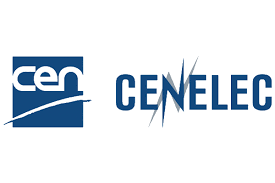Available Standards (3315)
Showing standards 2801 - 3000
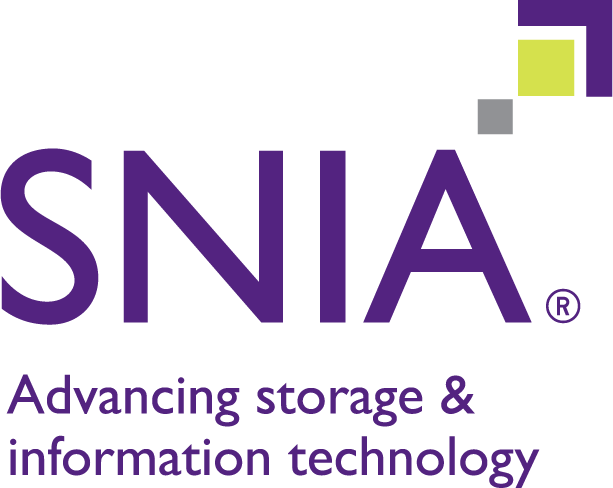
Scalable Storage Management (SSM) TWG
The SSM TWG is a technical work group of the SNIA Technical Committee defining the Swordfish specification that extends the Distributed Management Task Force (DMTF)'s Redfish specification (API) to
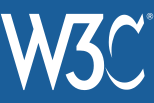
Scalable Vector Graphics (SVG) Working Group
The mission of the Scalable Vector Graphics (SVG) Working Group is to develop and maintain SVG.
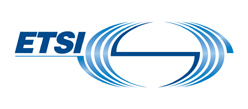
Scenario Definitions
The scope of the present document is to specify the minimum set of key scenarios for the Next Generation Protocols (NGP), Industry Specific Group (ISG).

Second Screen Working Group
The mission of the Second Screen Working Group is to provide specifications that enable web pages to use secondary screens to display web content.
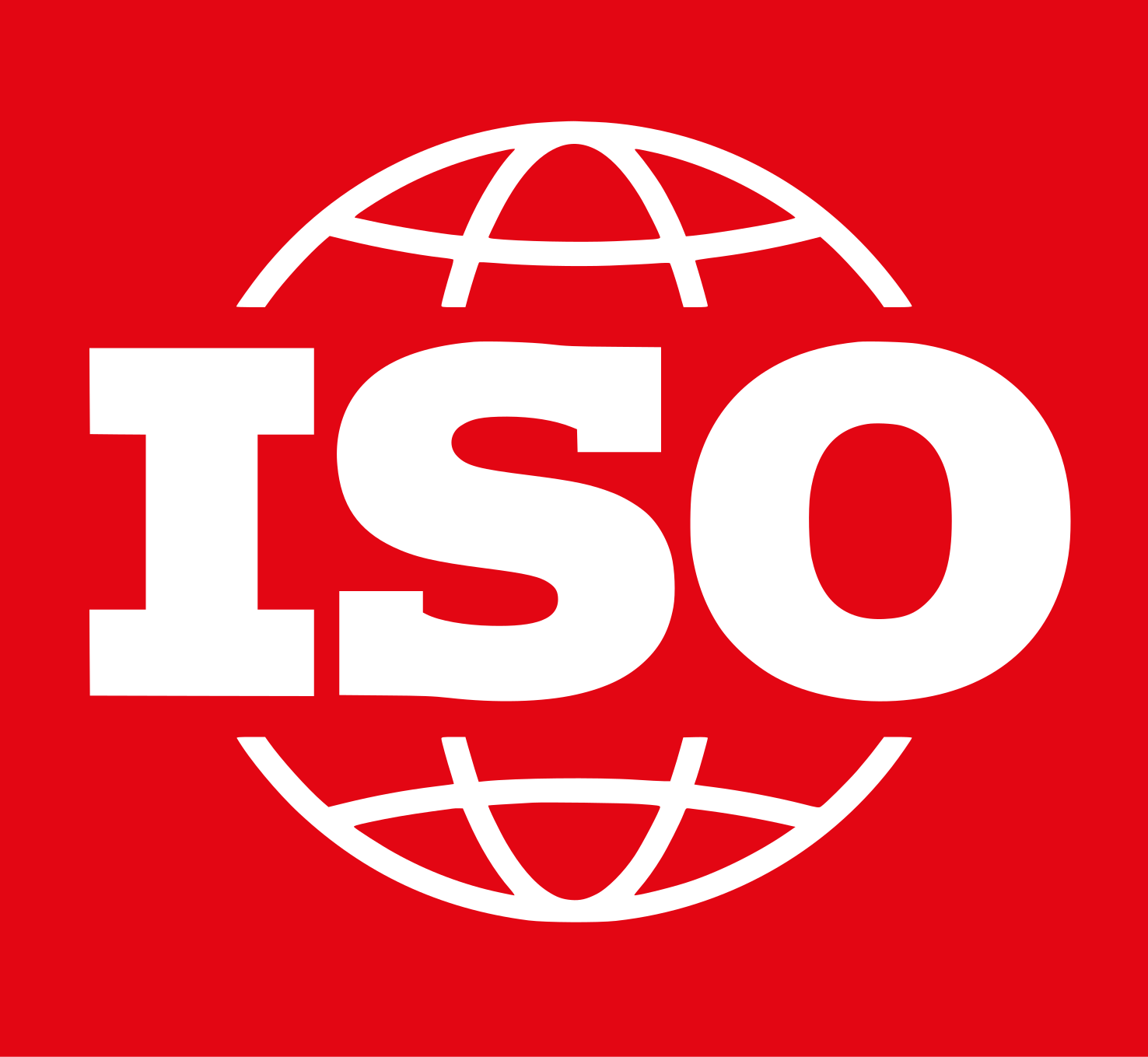
Secondary materials — Principles, sustainability and traceability requirements
This Standard under development is a follow up on IWA 19:2017 provides a global framework for the sustainable management of secondary metals.
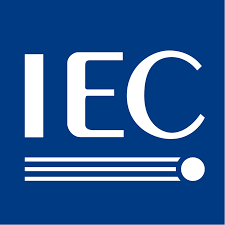
Secret sharing -- Part 1: General
ISO/IEC 19592 (all parts) specifies cryptographic secret sharing schemes and their properties.

Secret sharing -- Part 1: General
ISO/IEC 19592 (all parts) specifies cryptographic secret sharing schemes and their properties.

Secret sharing -- Part 2: Fundamental mechanisms
This document specifies cryptographic secret sharing schemes.

Secret sharing -- Part 2: Fundamental mechanisms
This document specifies cryptographic secret sharing schemes.

Securing Artificial Intelligence (SAI); Data Supply Chain Report
Data is a critical component in the development of AI systems.

Securing Artificial Intelligence (SAI); Mitigation Strategy Report
The goal is to have a technical survey for mitigating against threats introduced by adopting AI into systems.

Securing Artificial Intelligence (SAI);Mitigation Strategy Report
The present document summarizes and analyses existing and potential mitigation against threats for AI-based systems as discussed in ETSI GR SAI 004 [i.1].

Securing Artificial Intelligence (SAI);Problem Statement
The present document describes the problem of securing AI-based systems and solutions, with a focus on machine learning, and the challenges relating to confidentiality, i
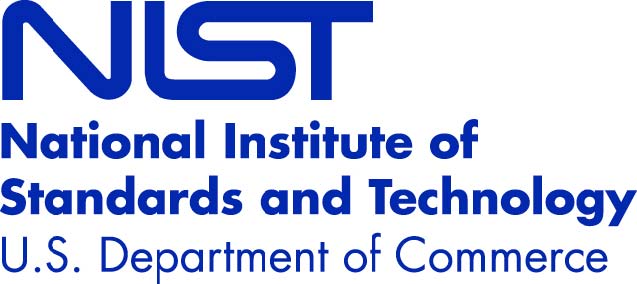
Security and Privacy Controls for Federal Information Systems and Organizations
This publication provides a catalog of security and privacy controls for federal information systems and organizations and a process for selecting controls to protect organizational operations (inc
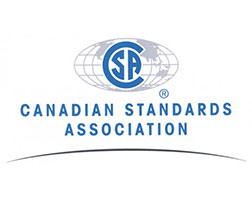
Security as a Service
The purpose of this research will be to identify consensus definitions of what Security as a Service means, to categorize the different types of Security as a Service and to provide guidance to org
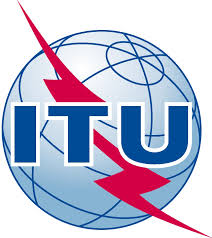
Security Assertion Markup Language (SAML 2.0)
SAML is an XML-based framework for exchanging security information.
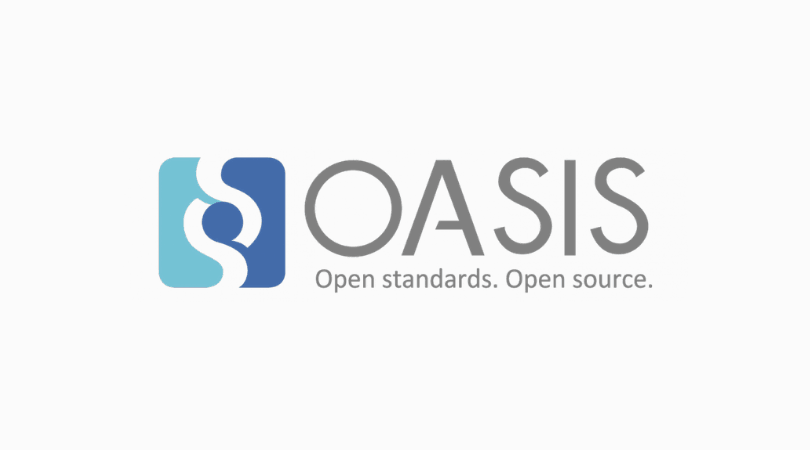
Security Assertion Markup Language (SAML) v2.0
The Security Assertion Markup Language (SAML), developed by the Security Services Technical Committee of OASIS, is an XML-based framework for communicating user authentication, entitlement, and att

Security assessment of operational systems
This Technical Report provides guidance and criteria for the security evaluation of operational systems.

Security assessment of operational systems
This Technical Report provides guidance and criteria for the security evaluation of operational systems.

Security assurance framework -- Part 1: Introduction and concepts
This part of ISO/IEC TR 15443 defines terms and establishes an extensive and organised set of concepts and their relationships for understanding IT security assurance, thereby establishing a basis

Security assurance framework -- Part 1: Introduction and concepts
This part of ISO/IEC TR 15443 defines terms and establishes an extensive and organised set of concepts and their relationships for understanding IT security assurance, thereby establishing a basis

Security assurance framework -- Part 2: Analysis
This part of ISO/IEC TR 15443 builds on the concepts presented in ISO/IEC TR 15443-1.

Security assurance framework -- Part 2: Analysis
This part of ISO/IEC TR 15443 builds on the concepts presented in ISO/IEC TR 15443-1.

Security considerations for quantum key distribution networks
This Technical Report provides security considerations for quantum key distribution (QKD) network. It describes the following:

Security evaluation of biometrics
This International Standard specifies the subjects to be addressed during a security evaluation of a biometric system.

Security evaluation of biometrics
This International Standard specifies the subjects to be addressed during a security evaluation of a biometric system.
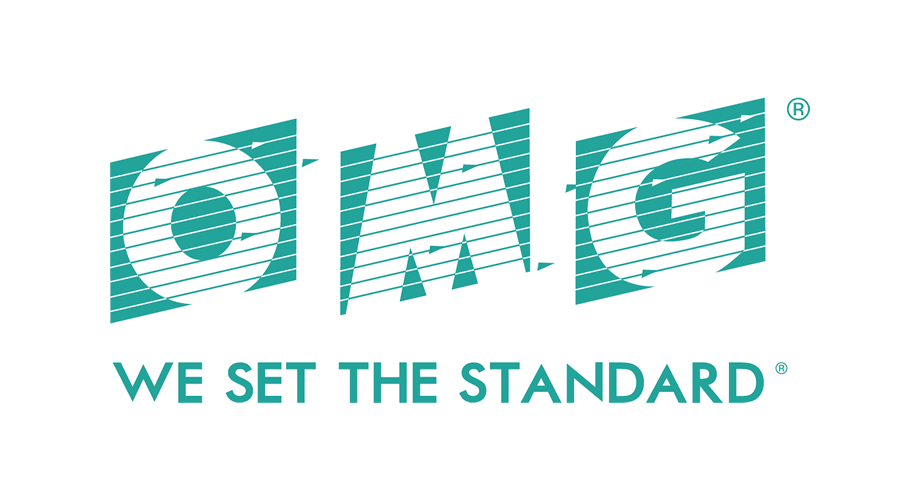
Security for Cloud Computing: 10 Steps to Ensure Success V3.0
Security for Cloud Computing: 10 Steps to Ensure Success provides a practical reference to help enterprise information technology (IT) and business decision makers analyze the security implications

Security for industrial automation and control systems - Part 3-2: Security risk assessment for system design
IEC 62443-3-2:2020 establishes requirements for:• defining a system under consideration (SUC) for an industrial automation and control system (IACS). • partitioning the SUC into zones and conduits.
Security for industrial automation and control systems - Part 4-1: Secure product development lifecycle requirements (IEC 62443-4-1:2018); German version EN IEC 62443-4-1:2018
Specifies process requirements for the secure development of products used in industry automation and control systems.

Security framework and requirements for service function chaining based on software-defined networking
Recommendation ITU-T X.1043 analyses security threats to and defines security requirements for software-defined networking (SDN) based service function chaining.

Security framework for cloud computing
Recommendation ITU-T X.1601 describes the security framework for cloud computing.

Security Guidance
Cloud Security Alliance’s Security Guidance for Critical Areas of Focus in Cloud Computing seeks to establish a stable, secure baseline for cloud operations.

Security guidelines for container in cloud computing environment
Recommendation X.1643 analyses security threats and challenges on virtualization container in cloud computing environment and specifies a reference framework with security guidelines for virtualiza

Security guidelines for identity management systems
This Recommendation proposes security guidelines for identity management (IdM) systems. The security guidelines provide how&nbs

Security information objects for access control
The scope of this Recommendation | International Standard is:

Security information objects for access control
The scope of this Recommendation | International Standard is:

Security management systems for the supply chain - Guidelines for the implementation of ISO 28000 - Part 2: Guidelines for adopting ISO 28000 for use in medium and small seaport operations
This part of ISO 28004 identifies supply chain risk and threat scenarios, procedures for conducting risks/threat assessments, and evaluation criteria for measuring conformance and effectiveness of

Security reference architecture for lifecycle management of e-commerce business data
Recommendation ITU-T X.1040 analyses the main features and typical threats faced by e‑commerce service ecosystems, and provides a security reference architecture for lifecycle management of e-comme

Security requirements and framework for big data analytics in mobile Internet services
Mobile Internet services harvest data in their big data infrastructure from multiple sources and multiple data dimensions with characteristics including scale, diversity, speed and possibly others

Security requirements and framework for narrowband Internet of things
Recommendation ITU-T X.1364 analyses potential deployment schemes and typical application scenarios for narrowband Internet of things (NB-IoT).

Security requirements for Communication as a Service application environments
Recommendation ITUT X.SRCaaS recommends the security requirements of communication as a service (CaaS) application environments

Security requirements for cryptographic modules
ISO/IEC 19790:2012 the security requirements for a cryptographic module utilised within a security system protecting sensitive information in computer and telecommunication systems.

Security requirements for cryptographic modules
ISO/IEC 19790:2012 the security requirements for a cryptographic module utilised within a security system protecting sensitive information in computer and telecommunication systems.

Security requirements for software as a service application environments
Recommendation ITU-T X.1602 analyses the maturity levels of software as a service (SaaS) application and proposes security requirements to provide a consistent and secure service execution environm

Security requirements of Network as a Service (NaaS) in cloud computing
Network as a Service (NaaS) is one of the representative cloud service categories, in which the capability provi

Security requirements of network virtualization
The Recommendation X.1044 analyses security challenges and threats on Network Virtualization, and provides the security re

Security requirements of public infrastructure as a service (IaaS) in cloud computing
Infrastructure as a Service (IaaS) is one of the representative categories of cloud services, in which the cloud

Security solutions (oneM2M TS-0003 version 2.12.1 Release 2A)
The present document defines security solutions applicable within the M2M system.
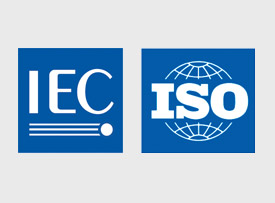
Security techniques — Extension to ISO/IEC 27001 and ISO/IEC 27002 for privacy information management — Requirements and guidelines
This document specifies requirements and provides guidance for establishing, implementing, maintaining and continually improving a Privacy Information Management System (PIMS) in the form of an ext

Security TWG
The Security TWG provides architectures and frameworks for the establishment of information security capabilities within the storage networking indust

SEDRIS (Synthetic Environment Data Representation and Interchange Specification) - Part 1: Functional specification
ISO/IEC 18023-1:2005 addresses the concepts, syntax and semantics for the representation and interchange of environmental data. It specifies:
SEDRIS (Synthetic Environment Data Representation and Interchange Specification) - Part 2: Abstract transmittal format
ISO/IEC 18023-2:2006 specifies the abstract syntax of a SEDRIS transmittal. Actual encodings (e.g. binary encoding) are specified in other parts of ISO/IEC 18023.
SEDRIS (Synthetic Environment Data Representation and Interchange Specification) - Part 3: Transmittal format binary encoding
ISO/IEC 18023-3:2006 defines a binary encoding for DRM objects specified in ISO/IEC 18023-1 according to the abstract syntax specified in ISO/IEC 18023-2.
SEDRIS (Synthetic Environment Data Representation and Interchange Specification) language bindings - Part 4: C
ISO/IEC 18024-4:2006 specifies a language-dependent layer for the C programming language. ISO/IEC 18023-1 specifies a language-independent application program interface (API) for SEDRIS.
Self-contained Information Retention Format (SIRF)
The SIRF format enables long-term physical storage, cloud storage and tape-based containers effective and efficient ways to preserve and secure digital information for many decades, even with the e

series on HDBaseT
The HDBaseT standard defines a protocol for communicating 5Play over a single long distance Local Area Network (LAN) cable.

series on Next Generation Service Overlay Networks
A framework of Internet Protocol (IP)-based service overlay networks is described and context-aware [e.g., such as required Quality of Service (QoS) level; type of service such as real time versus

SERIES X: DATA NETWORKS, OPEN SYSTEM COMMUNICATIONS AND SECURITY - Secure applications and services (2) – Distributed ledger technology security
Security guidelines for using distributed ledger technology for decentralized identity management

Service level agreement (SLA) framework -- Part 4: Components of security and of protection of PII
This document specifies security and protection of personally identifiable information components, SLOs and SQOs for cloud service level agreements (cloud SLA) including requirements and guidance.

Service level agreement (SLA) framework -- Part 4: Components of security and of protection of PII
This document specifies security and protection of personally identifiable information components, SLOs and SQOs for cloud service level agreements (cloud SLA) including requirements and guidance.
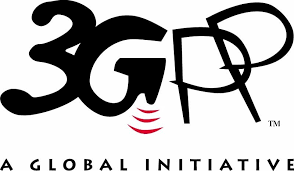
Service requirements for the 5G system
This 3GPP Technical Specification describes the service and operational requirements for a 5G system, including UE, NG-RAN, and 5G Core network.

Service Workers Working Group
The mission of the Service Workers Working Group is to enable Web applications to take advantage of persistent background processing, including hooks to enable bootstrapping of web applications whi

Set of parameters of cloud computing for monitoring
In accordance with the functional reference architecture of cloud computing that was defined in Recommendation ITU-T Y.3502, Recommendation ITU-T Q.3914 specifies the functional reference architect

SFF Technology Affiliate
The SNIA SFF Technology Affiliate (TA) Technical Work Group (TWG) work items include the development of technical specifications as SNIA Architecture fo

SG13: Future networks, with focus on IMT-2020, cloud computing and trusted network infrastructures

Short Range Devices (SRD); Harmonised Standard for access to radio spectrum; Inductive loop systems for robotic mowers operating within the frequency range 100 Hz to 148,5 kHz
The document specifies technical characteristics and methods of measurements for Robotic Mowers with Inductive loop systems (RMI) operating within the frequency range 100 Hz to 148,5 kHz.
Short Range Devices (SRD); Ultra Low Power (ULP) wireless medical capsule endoscopy devices operating in the band 430 MHz to 440 MHz; Harmonised Standard for access to radio spectrum
The present document is aiming to cover radio and telecommunications terminal equipment within the scope of the EU's Radio Equipment Directive (RED) [i.2].

Sidetree v1.0.0
Sidetree is an alternative protocol for anchoring DIDs, ie. creating scalable Decentralized Identifier networks that can run atop any existing decentralized anchoring system (e.g.
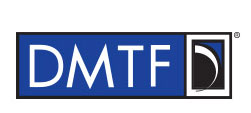
SM CLP Admin Domain Profile SM CLP Command Mapping
This specification contains the requirements for an implementation of the SM CLP

Smart Cities
1. Serve as the focus of and proponent for JTC 1's Smart Cities standardization program.

Smart Cities
1. Serve as the focus of and proponent for JTC 1's Smart Cities standardization program.

Smart Cities Ontology
We collaborated with Open Agile Smart Cities (OASC) and Sirus to provide DTDL-based onotlogy, starting with ETSI CIM NGSI-LD, and accelerate accelerate development of digital twins-based solutions

Smart city concept model — Guidance for establishing a model for data interoperability.
This International Standard is aimed at organizations that provide services to communities in cities, and manage the resulting data, as well as decision-makers and policy developers in cities

Smart city concept model — Guidance for establishing a model for data interoperability.
This International Standard is aimed at organizations that provide services to communities in cities, and manage the resulting data, as well as decision-makers and policy developers in cities

Smart community infrastructures - Guidance on smart transportation with QR code identification and authentification in transportation and its related or additional services
This document provides guidance on transportation and its related or additional services using quick response (QR) codes for identification and authentication in data transfer, in order to make the

Smart Energy Aware Systems (SEAS)
SEAS ontology describes energy systems and their interactions.

Smart tracker chips - Feasibility study on the inclusion of RFID in Electrical and Electronic Equipment for WEEE management
This Technical Report investigates in the light of the implementation of the WEEE Directive

SmartM2M - Extension to SAREF; Part 4: Smart Cities Domain
SAREF4CITY, an extension of SAREF for the Smart Cities domain
SmartM2M; Artificial Intelligence and the oneM2M architecture
The present document is addressing the issues related to the introduction of AI into IoT systems and, as first priority, into the oneM2M architecture. The following points are discussed:

SmartM2M; IoT Standards landscape and future evolutions
The scope of the present document is to provide an overview of the IoT standards landscape: requirements, archit

SmartM2M; SAREF extension investigation; Requirements for industry and manufacturing domains
Points to "Cyberphysical systems: the usage of robots and advanced T-capabilities (sensors, data analytics) in a production environment" as Related Standardization Initiatives of relevance to the are
SmartM2M; SAREF extension investigation; Requirements for Wearables
Implications of standardization to BioMot - Smart Wearable Robots with Bioinspired Sensory-Motor Skill
SmartM2M; Smart Appliances Ontology and Communication Framework Testing; Part 1: Testing methodology
The scope of the present document is to support Smart Appliance common ontology and communication framework testing needs.

SmartM2M; Use cases for cross-domain data usability of IoT devices
Scope of document is to identify, select and describe use cases where the IoT data and services require data usability specifications for machines consuming data for AI (for example machine learning).
SMASH Collections Profile SM CLP Command Mapping Specification
This specification contains the requirements for an implementation of the SM CLP

Software and systems engineering
Software is now ubiquitous and an extremely important element in almost any technology and technology based systems.

Software and systems engineering
Software is now ubiquitous and an extremely important element in almost any technology and technology based systems.

Software Defined Perimeter
The “Software Defined Perimeter (SDP) protocol,” is designed to provide on-demand, dynamically provisioned, air-gapped networks.

Software Defined Perimeter Working Group
The Software Defined Perimeter working grouped launched with the goal to develop a solution to stop network attacks against application infrastructure.

Software engineering — Systems and software Quality Requirements and Evaluation (SQuaRE) — Quality model for AI-based systems
Software quality: Quality assessment for AI-based systems (see also 4.1.1 and 4.3.1.4)

Solid State Storage (SSS) Performance Test Specification (PTS)
The SNIA has developed methods which enable manufacturers to set, and customers to compare, the performance specifications of Solid State Storage devices, which are evolving with the state of the t

Solid State Storage Initiative
The Solid State Storage Technical Work Group has been created for the purpose of developing standards related to system implementations o

Solid State Storage System
The Solid State Storage System (S4) TWG was created for the purpose of addressing the unique performance behavior of solid state storage systems.

Sourcing of Market Survey Information
Business Requirement Specification for the sourcing of Market Survey results, using the UN/CEFACT Modelling Methodology (UMM) approach and Unified Modelling Language to describe and
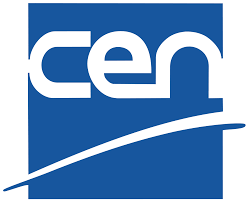
Space - Use of GNSS-based positioning for road Intelligent Transport System (ITS) - Security attacks modelling and definition of performance features and metrics related to security
The objective is to analyse the security issues that can occur at the GNSS SIS level.

Space - Use of GNSS-based positioning for road Intelligent Transport Systems (ITS) - Field tests definition for basic performance
The purpose is to define the tests to be performed in order to evaluate the performances of road applications’ GNSS-based positioning terminal (GBPT).

Space data and information transfer systems — Open archival information system (OAIS) — Reference model
ISO 14721:2012 defines the reference model for an open archival information system (OAIS).

Special Committee (SC) Emergency Telecommunications (EMTEL)
The EMTEL Special Committee is responsible for the capture of European requirements concerning emergency communication services, covering typically the four scenarios in case of an emergency e.g.

Specific requirements and capabilities of the Internet of things for big data
The purpose of this Recommendation is to specify requirements and capabilities of the IoT for Big Data.

Specification of TTP services to support the application of digital signatures
This Recommendation | International Standard will define those TTP services needed to support the application of digital signatures for the purpose of non-repudiation of creation of documents.

Specification of TTP services to support the application of digital signatures
This Recommendation | International Standard will define those TTP services needed to support the application of digital signatures for the purpose of non-repudiation of creation of documents.

Speech and multimedia Transmission Quality (STQ); Framework for multi-service testing
The present document provides a framework for concurrent tests of multiple services, using a top-level approach which is also modular and scalable with respect to new services.

Speech and multimedia Transmission Quality (STQ); Guidelines for the Measurement of Data Throughput on Devices connected to Mobile Networks
The present document provides a contribution to the evolution of network performance testing towards a professional degree of transparency.

Speech and Multimedia Transmission Quality (STQ); Guidelines on OTT Video Streaming; Service Quality Evaluation Procedures
The present document's scope is to provide guidance on OTT video streaming testing approach with a set of minimum desired and most meaningful QoE centric QoS parameters along with recommendations t

Speech and multimedia Transmission Quality (STQ); Quality of Service aspects for 5G; Discussion of QoS aspects of services related to the 5G ecosystem
The present document summarizes the results of an analysis of the impact of the upcoming 5G on existing QoS metrics, and the question if extensions or modifications of the portfolio of QoS paramete

Speech and multimedia Transmission Quality (STQ); Quality of Service aspects for IoT; Discussion of QoS aspects of services related to the IoT ecosystem
The present document discusses Quality of Service (QoS) aspects of services related to the Internet of Things (IoT) ecosystem from an end-to-end perspective; a strict end-user, service-oriented poi
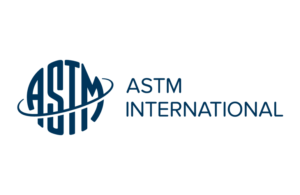
Standard Classification for Hierarchy of Equipment Identifiers and Boundaries for Reliability, Availability, and Maintainability (RAM) Performance Data Exchange
1.1 This classification is to serve as an international standard for marine equipment nomenclature, taxonomy, hierarchical data structure, unique identifiers, and boundary definition for the consis

Standard data element types with associated classification scheme - Part 1: Definitions - Principles and methods
This part of IEC 61360 specifies principles for the definition of the properties and associated
attributes and explains the methods for representing verbally defined concepts with

Standard data element types with associated classification scheme for electric components - Part 2: EXPRESS dictionary schema
This part of IEC 61360 series provides a formal model for data according to the scope as
given in IEC 61360-1 and ISO 13584-42, and thus provides a means for the computer-

Standard Data Format for Blockchain Systems
Data format requirements for blockchain systems are established in this standard. This standard addresses data structures, data types, and data elements.
Standard for 3D Body Processing
This standard addresses the anthropometric and topo-physiological attributes that contribute to the quality of experience of 3D body processing, as well as identifying and analyzing metrics and other
Standard for a Basic Framework for Motion Training System
This standard defines the basic framework within the overall architectural framework for motion training systems.
Standard for a Custodian Framework of Cryptocurrency
A framework of a custodian service for cryptocurrency and token assets is defined in this standard.
Standard for a data-trading system: overview, terminology and reference model
This standard establishes a system designed to trade data through domain-independent and principled marketplaces operating under a unified architecture.
Standard for a Decentralized Identity and Access Management Framework for Internet of Things
This standard defines a decentralized identity and access management (IAM) framework for the Internet of Things (IoT) based on the emerging concepts such as decentralized identifiers (DIDs) and verifi
Standard for a Functional Architecture of Distributed Energy Efficient Big Data Processing
This standard specifies a functional architecture that supports the energy-efficient transmission and processing of large volumes of data, starting at processing nodes close to the data source, with s
Standard for a Reference Architecture for Big Data Governance and Metadata Management
This standard defines a big data governance, metadata management and machine-readable reference architecture to enable scalability, findability, accessibility, interoperability and reusability of data
Standard for an Age Appropriate Digital Services Framework Based on the 5Rights Principles for Children
A set of processes by which organizations seek to make their services age appropriate is established in this standard.
Standard for an Architectural Framework for the Internet of Things (IoT)
Self-management of health, with decision-making processes(cognitive and robotics)
Standard for an Augmented Reality Learning Experience Model
Augmented Reality (AR) promises to provide significant boosts in operational efficiency by making information available to employees needing task support in context in real time.
Standard for Application Technical Specification of Blockchain-based E-Commerce Transaction Evidence Collecting
This standard specifies the terminology, technical reference framework, basic functional requirements, and technical indicators for the platform of blockchain-based e-commerce transaction evidence col
Standard for Artificial Intelligence (AI) Model Representation, Compression, Distribution and Management
The AI development interface, AI model interoperable representation, coding format, and model encapsulated format for efficient AI model inference, storage, distribution, and management are discussed
Standard for Artificial Intelligence and Machine Learning Terminology and Data Formats
The standard defines specific terminology utilized in artificial intelligence and machine learning (AI/ML). The standard provides clear definition for relevant terms in AI/ML.
Standard for Assessment of Blockchain-based Internet of Things (IoT) Data Management
This standard defines the assessment framework for data compliance, governance and risk management and provides performance metrics such as availability, security, privacy, integrity, continuance, sca
Standard for Authentication in a Multi-server Environment
The standard describes an authentication scheme including the following features: 1) User needs single unique login credentials to logon to multi-Server setup 2) It offers a two-factor authenticati

Standard for Autonomous Robotics (AuR) Ontology
This standard is a logical extension to IEEE 1872-2015 Standard for Ontologies for Robotics and Automation.

Standard for Big Data Business Security Risk Assessment
This standard can be applied to internet-based business scenarios, and can also be served serve as a practical guide to achieve help assess business security risk control through the big data technolo
Standard for Bio-CAD File Format for Medical Three-Dimensional (3D) Printing
This standard defines the Bio-CAD format for three-dimensional (3D) Printing based on Sectional Scan image data containing surface and volumetric information.

Standard for Biometric Liveness Detection
A biometric lifeless attack is one of the indispensable issues within biometric authentication.

Standard for Blockchain Access Control
The standard establishes access control requirements for blockchain systems. The standard addresses the following access control attributes of the system, including but not limited to:
Standard for Blockchain based Digital Asset Management
A baseline architectural framework will be defined in this standard. In addition, the general process for digital asset management on blockchain will be outlined.
Standard for Blockchain in Energy
This guide provides an open, common, and interoperable reference framework model for distributed ledger technology (DLT), such as blockchain in the energy sector. It also covers three aspects:
Standard for Blockchain Interoperability Data Authentication and Communication Protocol
Blockchain interoperability is the ability of two or more blockchain systems or applications to exchange information and to mutually use the information that has been exchanged.
Standard for Blockchain Service Capability Evaluation
This standard defines a framework of service capability which includes the technology, human resource and qualifications of the entity and provides a set of indicators for the evaluation of service ca
Standard for Blockchain System Governance Specification
For permissioned and permission-less blockchains, this standard specifies a governance structure, governance tools and methods.
Standard for Blockchain-based Digital Asset Exchange Model
This standard defines an exchange model for blockchain-based digital assets.
Standard for Blockchain-based Digital Asset Identification
The data fields, types, and formats related to digital assets to improve digital asset identification efficiency are defined by this standard.
Standard for Blockchain-based Digital Identity System Framework
The standard establishes requirements for blockchain based digital identity systems.
Standard for Blockchain-based Electronic Contracts
This standard defines a technical reference framework and terminology for the platform of blockchain in electronic contracts. Functional requirements and technical indicators are also defined.
Standard for Blockchain-based Electronic Evidence Interface Specification
This standard defines the data format, classification and application programming interface of blockchain in the field of electronic evidence.
Standard for Blockchain-based Green Power Identification Application
This standard defines an application model and technical framework for green power identification based on blockchain.
Standard for Capability Evaluation Requirements of Blockchain Practitioners
This standard defines the types of occupations, competency requirements, and evaluation methods of blockchain and distributed ledger technology for service practitioners, including but not limited to
Standard for Child and Student Data Governance
This standard provides stakeholders with certifiable and responsible child and student data governance methodologies.
Standard for Cloud Computing Shared Function Model
This standard provides a general shared function model for cloud computing, in order to normalize how functions are shared between cloud service providers (CSPs) and cloud service customers (CSCs).
Standard for Confirming and Conveying Identity Over the Internet
The standard defines methods of out-of-band third-party individual identity attestation and secure conveyance requiring no key storage on the endpoint device.

Standard for Cryptocurrency Payment Performance Metrics
This standard defines the performance metrics of cryptocurrency payment between consumers and merchants required to quantify the experience assessment of both consumers and merchants, such as the dura
Standard for Data and Artificial Intelligence (AI) Literacy, Skills, and Readiness
To coordinate global data and AI literacy building efforts, this standard establishes an operational framework and associated capabilities for designing policy interventions, tracking their progress,
Standard for Digital Twin Maturity Model and Assessment Methodology in Industry
This standard defines a digital twin maturity model for industry, including digital twin capability domains and corresponding subdomains.
Standard for Distributed/Decentralized Exchange Framework Using Distributed Ledger Technology (DLT)
This standard defines an extension framework based on IEEE 2140.1-2020.
Standard For Electric-Battery-Powered Industrial Trucks
Theserequirementscoverelectricpoweredindustrialtrucks,suchastractors,platform-lifttrucks,fork-lifttrucks,andothervehiclesdesignedforspecificindustrialuses,withrespecttoariskoffire,electricshock,andexp
Standard for Ethernet Amendment Physical Layer and Management Parameters for 400 Gb/s over Multimode Fiber
Define Physical Layer specifications (PHY) and management parameters for the transfer of Ethernet format frames at 400 Gb/s over fewer than 16 pairs of multimode fiber physical media.

Standard for Ethernet Amendment: Bidirectional 10 Gb/s, 25 Gb/s, and 50 Gb/s Optical Access PHYs
The scope of the project defines physical layer specifications and management parameters for symmetric bidirectional 10 Gb/s, 25 Gb/s, and 50 Gb/s operation over single strand of single mode fiber

Standard for Ethernet Amendment: Maintenance #13: Power over Ethernet over 2 pairs
This project will implement editorial and technical corrections, refinements, and clarifications to Clause 33, Power over Ethernet over 2 pairs, and related portions of the standard.

Standard for Ethernet Amendment: Maintenance #14: Isolation
Replace references to the IEC 60950 series of standards (including IEC 60950-1 "Information technology equipment - Safety - Part 1: General requirements") with appropriate references to the IEC 623

Standard for Ethernet Amendment: Physical Layer Specifications and Management Parameters for 100 Gb/s, 200 Gb/s, and 400 Gb/s Electrical Interfaces Based on 100 Gb/s Signaling
This project is to specify additions to and appropriate modifications of IEEE Std 802.3 to add Physical Layer specifications and Management Parameters for 100 Gb/s, 200 Gb/s, and 400 Gb/s electrica

Standard for Ethernet Amendment: Physical Layer Specifications and Management Parameters for 25 Gb/s and 50 Gb/s Passive Optical Networks
The scope of this project is to amend IEEE Std 802.3 to add physical layer specifications and management parameters for point-to-multipoint passive optical networks supporting MAC data rates of 25

Standard for Ethernet Amendment: Physical Layers and Management Parameters for 100 Gb/s and 400 Gb/s Operation over DWDM (dense wavelength division multiplexing) systems
Define physical layer specifications and management parameters for the transfer of Ethernet format frames at 100 Gb/s and 400 Gb/s at reaches greater than 10 km over DWDM systems.

Standard for Ethernet Amendment: Physical Layers and Management Parameters for 100 Gb/s and 400 Gb/s Operation over Single-Mode Fiber at 100 Gb/s per Wavelength
This project is to specify additions to and appropriate modifications of IEEE Std 802.3 to add PHY specifications and Management Parameters for 100 Gb/s and 400 Gb/s Ethernet optical interfaces for

Standard for Ethernet Amendment: Physical Layers and Management Parameters for 50 Gb/s, 200 Gb/s, and 400 Gb/s Operation over Single-Mode Fiber
Define physical layer specifications and management parameters for the transfer of Ethernet format frames at 50 Gb/s, 200 Gb/s, and 400 Gb/s at reaches greater than 10 km over single-mode fiber.

Standard for Ethernet Amendment: Physical Layers and management parameters for increased-reach point-to-multipoint Ethernet optical subscriber access (Super-PON)
This amendment adds physical layer specifications and management parameters for optical subscriber access supporting point-to-multipoint operations using wavelength division multiplexing over an in

Standard for Ethical considerations in Emulated Empathy in Autonomous and Intelligent Systems
This standard defines a model for ethical considerations and practices in the design, creation and use of empathic technology, incorporating systems that have the capacity to identify, quantify, respo
Standard for Ethically Aligned Design and Operation of Metaverse Systems
This standard defines a methodology for creating possible Metaverse systems.
Standard for Ethically Driven Nudging for Robotic, Intelligent and Autonomous Systems
"Nudges" as exhibited by robotic, intelligent or autonomous systems are defined as overt or hidden suggestions or manipulations designed to influence the behavior or emotions of a user.
Standard for External Data Retrieval of Blockchain for Risk Mutual Assistance Model
The standard defines the Entity Risk Mutual Assistance Model (RMAM) based on blockchain technology, including the involved entities of interest, the relationship between entities, organizational frame
Standard for Fail-Safe Design of Autonomous and Semi-Autonomous Systems
This standard establishes a practical, technical baseline of specific methodologies and tools for the development, implementation, and use of effective fail-safe mechanisms in autonomous and semi-auto
Standard for Framework of Blockchain-based Internet of Things (IoT) Data Management
A framework of blockchain-based Internet of Things (IoT ) data management is defined in this standard.
Standard for Functional Requirements in Blockchain-based Internet of Things (IoT) Data Management
This standard defines the functional requirements in data compliance, governance and risk management in the operational process for Blockchain-based IoT data management systems.
Standard for General Process of Cryptocurrency Payment
Defined in this standard is the general process of cryptocurrency payment between consumers and merchants.
Standard for General Requirements for Cryptocurrency Exchanges
Self-discipline and professional ethics of cryptocurrency exchange platforms, as well as relevance between them and to cryptocurrency wallets are covered in this standard.
Standard for Head Mounted Display (HMD) Based Virtual Reality (VR) Sickness Reduction Technology
Head-mounted display-based virtual reality sickness-reducing technology is defined.
Standard for Human Augmentation: Identity
This standard specifies the requirements and methods for verifying the identity of a person equipped with human augmentation technologies.

Standard for Immersive Visual Content Coding
Efficient coding tool sets for compression, decompression, and reconstructing of the immersive visual content data is provided.
Standard for Industrial Artificial Intelligence (AI) Data Attributes
This standard defines attributes related to industrial Artificial Intelligence (AI) data that facilitates the classification, association, and mapping towards value creation using data.
Standard for Intercloud Interoperability and Federation
A functional model for federation based on the NIST Cloud Federation Reference Architecture is defined in this standard. This model allows a range of deployment topologies and governance.
Standard for Machine Readable Personal Privacy Terms
The standard identifies/addresses the manner in which personal privacy terms are proffered and how they can be read and agreed to by machines.
Standard for Measuring Robot Agility
This standard provides a listing of desirable traits of robotic systems under the umbrella of agility - a compound notion of reconfigurability and autonomy as opposed to the typical robotic use of rig
Standard for Metaverse: Terminology, Definitions, and Taxonomy
This standard specifies the terminology, definitions, and taxonomy for metaverse and related terms.
Standard for Operator Interfaces of Artificial Intelligence
A set of operator interfaces frequently used in artificial intelligence (AI) applications is defined in this standard, where the AI operators refer to the standard building blocks and primitives for p
Standard for Patient Digital Biomedical Data Files with 3D Topological Mapping of Macroanatomy and Microanatomy for Use in Big Data and Augmented Intelligence Systems
This standard provides a framework for organization and use of new patient biomedical files containing medical imaging and imaging biomarker information for use in big data cloud-based augmented intel
Standard for Performance Benchmarking for AI Server Systems
Artificial intelligence (AI) computing differs from generic computing in terms of device formation, operators, and usage.
Standard for Risk Control Requirements for Cryptocurrency Payment
This standard defines the risk control requirements for cryptocurrency payment between consumers and merchants.
Standard for Robustness Testing and Evaluation of Artificial Intelligence (AI)-based Image Recognition Service
Test specifications with a set of indicators for common corruption and adversarial attacks, which can be used to evaluate the robustness of artificial intelligence-based image recognition services are
Standard for Security Management for Customer Cryptographic Assets on Cryptocurrency Exchanges
In this standard requirements are defined for multiple aspects of security management for customer cryptographic assets on cryptocurrency exchanges, such as user identification using multi-factor auth
Standard for Semantic Maps for Autonomous Robots
This standard defines a reference model, fundamental data models, and an application framework of semantic maps for autonomous robots.
Standard for Spatial Web Protocol, Architecture and Governance
This standard describes a Hyperspace Transaction Protocol (HSTP) that enables interoperable, semantically compatible connections between connected hardware (e.g.
Standard for Technical Requirements of Digital Collection Services Based on Blockchain Technologies
This standard defines technical requirements of a digital collection service based on blockchain technologies. A technical architecture, functional components, and security requirements are defined.
Standard for Testing Specification of Blockchain Systems
This standard defines definitions, types, test specifications, test methods and test processes for blockchain systems. Test contents are included for each type of test.
Standard for the Deep Learning-Based Assessment of Visual Experience Based on Human Factors
Measuring quality of experience (QoE) aims to explore the factors that contribute to a user's perceptual experience including human, system, and context factors.
Standard for the Description of the Natural or Artificial Character of Intelligent Communicators
This standard describes recognizable audio and visual marks to assist with the identification of communicating entities as human or machine intelligence to facilitate transparency, understanding, and
